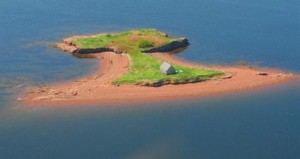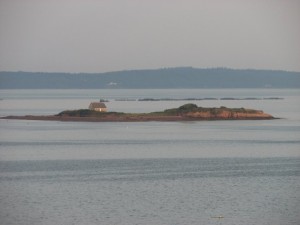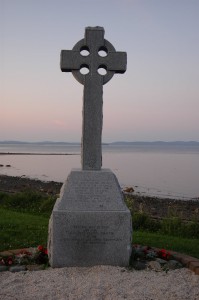Just a couple kilometres offshore the quaint sea coastal village of St. Andrews-By-The-Sea, New Brunswick, lays Little Hardwood Island, used extensively during the mid-1800s as a quarantine station. The tiny island, comprising less than three acres sits in picturesque Passamaquoddy Bay next to its larger sister Hardwood Island. A small hospital with simple medical facilities opened in 1832 to manage a cholera outbreak. In 1847, the site, renamed Hospital Island, became overwhelmed when medical staff attempted to handle the mass influx of Irish Famine immigrants. The Irish, hoping to find a new life in the New World, died easily from typhus onboard ship with little resistance attributed to malnutrition and various stages of starvation. Many died en route. Those who died while in quarantine were interred on the tiny landmass, the exact number of deaths unknown. Some estimated the death toll as high as four hundred souls. Similar to conditions at other quarantine stations along the St. Lawrence River, some of those who came to aid the sick became infected themselves and died. Dr. Samuel Frye died at Hospital Island.
If the pitiful situation at Hospital Island wasn’t enough to raise sympathy for the plight of the Irish people, newspaper reporters wrote that in 1869, the Saxby Gale was so vicious a storm, it washed away soil from the Irish cemetery, uncovering coffins, and exposing skeletons. Bones that washed ashore on the mainland were desecrated, with awful stories circulating of children using human skulls to kick around. It would take a decade before the deceased Irish remains — what could be collected — were re-interred in a more sheltered area of the island.
Like Partridge Island in Saint John, New Brunswick, Hospital Island is not open to the public. Privately owned, the island’s proprietor, Peter McCarthy comments that, “the only remnants of the original buildings are depressions in the ground from the old foundations close to the new cottage.” In his wanderings he has found artifacts such as old spikes and parts of old stoves. Today, the island offers a safe nesting area for various birds including black backed gulls, herring gulls, and eider ducks.
A Celtic cross memorial to the Irish who died at Hospital Island stands at Indian Point along the shoreline in St. Andrews-By-The-Sea. Erected in May, 1995, the monument features various symbols depicting the Irish story including a shamrock, fiddle, and sailboat (representing their tragic voyage.) Its inscription reads:
“In memory of
Those men, women and children
Who died of hunger and disease
While fleeing the potato famine
In Ireland and lie buried
On Hospital Island
Lovingly remembered by
Their descendants who persevered
And helped build this great nation”“Erected May 28, 1995
By the
Charlotte County Chapter
Of the
Irish Canadian Cultural Association
Of New Brunswick”




29 comments for “Hospital Island: St. Andrews-By-The-Sea”